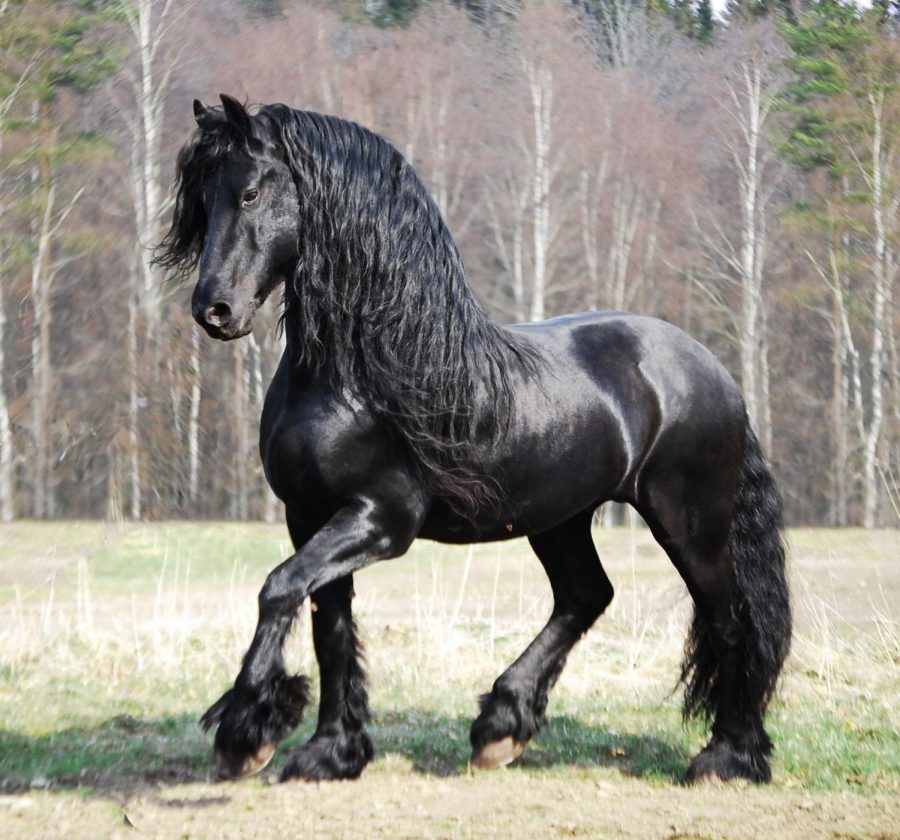Friesian horse
November 5, 2019
The Friesian horse has been around for almost 1,000 years the first documents which appear to discuss this breed and its positive qualities have been dated before the year 1200. King Louis ll who was the ruler of Hungary is often described as riding a Friesian horse. Ancestors of the modern Friesian horse are even said to have been used in the medieval period because they could effectively carry knights and nobility into battle. The first imports to North America for Friesian horses occurred in the 1600s after colonies were established. Most people picture the Friesian horse as a pure black horse. This is because Friesian horses in other coat colors are not able to be registered. This horse breed and no stallion with this coloration are allowed to register.
When Friesian horses are used as a carriage horse they traditionally pull a carriage that is unique to them. The carriage which is called a “jess” is essentially a lounge-style of chair that is on wheels. Each carriage is traditionally registered. sometimes to the horse itself and everyone must be unique. They are intricately detailed, have wheels that must be 5-feet or higher, and there must be 14 spokes on each wheel. Most official registries for this horse breed will only allow a small on the forehead. Which will cause it to not be accepted as breeding stock?
The average Friesian horse will Stan vat 15.3 hands in height some stallions have been known to be greater than 17 hands. In order for a Friesian horse to be given the designation of “star pedigree” it must stand at 15.2 hands at minimum. Judges will also inspect the horse for power, bone structures, and body type to determine if the star pedigree designation is deserved. The Friesian is one of the few purebred horses that are not warm blood, feathering refers to the longer hairs that are around the grooves of the horse. In this breed they are traditionally kept untrimmed this means that the horse can be at a higher risk of skin issues underneath the feathers such as rain rot depending on the conditions where the horse lives.
Picture credit: google
Featured image: google
info: google

